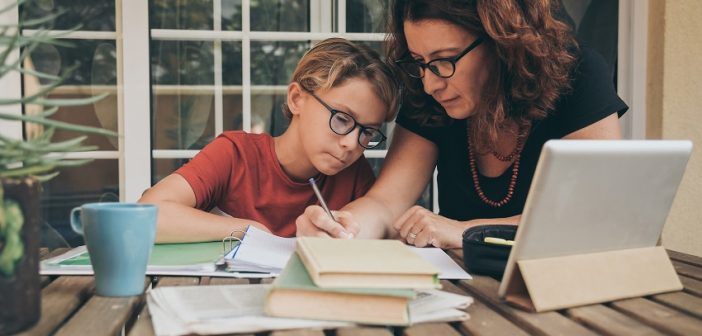It’s been more than a year now since COVID-19 swept the globe and changed the way we work, live, and go to school. Families were forced to adapt to online learning, either homeschooling themselves or helping their children to succeed in remote learning with their teachers.
This hasn’t been easy, even for parents with extensive resources. But for families without easy access to a computer and reliable internet access (estimated to affect 13.5 million school-age children), it has been a huge struggle. Lower-income families have been disproportionally affected by the sudden shift to homeschooling.
So, how are things going one year later? Here’s what we know so far about the impact of unplanned homeschooling due to COVID-19.
The Impact of Online Education on Families
Many parents and educators are concerned about the impact of online education on millions of children throughout the country. Although some kids are thriving with remote learning, many others have struggled during the past year.
Parents’ concerns, according to a Pew poll, range from being worried about their children falling behind to concerns over the lack of social connection and interaction. Many are also frustrated by the amount of screen time necessary to sustain Additionally, there are major concerns about children’s emotional well-being and mental health during the pandemic.
Social Development & Emotional Concerns
Going to school isn’t all about academics, of course. Children need time to develop social skills, connections with others, and emotional intelligence. Regular interaction with other students and teachers helps children learn how to interact appropriately with others and build important bonds.
Families are concerned about how isolating distance learning has been for their children, whose only interactions with the outside world in the past year have been over video chat. Younger children are especially harmed by isolation, as they are missing out on the opportunity to practice their social skills at a crucial time in their lives. With so much screen time, kids aren’t getting the benefits of playing with their peers.
Another problem with distance learning is engagement. It’s much harder to keep students engaged in the virtual classroom when they’re in their own “silos,” surrounded by distractions. Some students are skipping classes or not paying attention, while others are simply having trouble engaging without the social connection and emotional cues available in classroom learning.
All of this adds up to a lack of motivation, which is causing some students to fall behind. This is especially true for students who thrive on interaction with their peers.
Tips for Encouraging Positive Behavior in the Classroom
Lots of parents are frustrated with homeschooling right now, especially those whose children are struggling. If you’re dealing with issues like disengagement, poor behavior, and lack of focus, it can be difficult to ensure that your child is getting a good education at home.
The good news is that there’s a lot of information out there to help encourage positive behavior in the classroom, whether virtually or in person. Understanding more about why your child behaves the way they do can help you in responding appropriately.
The first step is to observe your child’s daily routine in the “classroom” and see where they run into trouble. That way, you can work backward and make changes. For instance, if your child gets frustrated when they can’t solve a problem, see if you can work together on challenging problems and offer praise and encouragement.
Or, if your child has trouble sitting still during video sessions, talk to the teacher and see if it’s okay to take more breaks or to allow your child to use a fidget toy during class. It’s important to find solutions that work for your family.
If you’re really struggling, ask for help. See if your child’s teacher can give you any pointers. Teachers become masters of classroom management and are usually very happy to help in any way they can. Just keep in mind that they’ve got a lot of responsibilities and they need to make sure they’re keeping up with each individual student.
Free Education Resources for Students & Homeschooling Families
Many families homeschool by choice and find that it works well for them. But others were blindsided by the sudden shift and were not prepared for at-home learning. Fortunately, there are tons of great resources online for parents who want to offer their children the best education possible while attending school remotely.
Some websites and homeschool programs are doing their part by offering free resources or discounts during the pandemic. Even if your family has fallen on hard times, you should be able to find some great options to help you with homeschooling. Hang in there and don’t give up!





You’re right. The Covid-19 pandemic influenced the lives of all people in the world. Many have experienced difficulties and stress due to isolation and lack of social relations. I also worried, because my daughter finished school last year and it was difficult for her to prepare for final exams in online mode. We also needed to think about admission to college and prepare all the necessary documents. It was difficult to make in self-isolation, so we decided to use sop creator services and did not regret it. We saved a lot of time and only provided the necessary information, and professional writers and editors were all prepared for us, and for 3 days we received ready-made qualitatively decorated documents for email. And we were very happy.
This hasn’t been easy, even for parents with extensive resources. But for families without easy access to a computer and reliable internet access (estimated to affect 13.5 million school-age children), it has been a huge struggle. Lower-income families have been disproportionally affected by the sudden shift to homeschooling. ComPTIA CS0-002 Dumps Questions